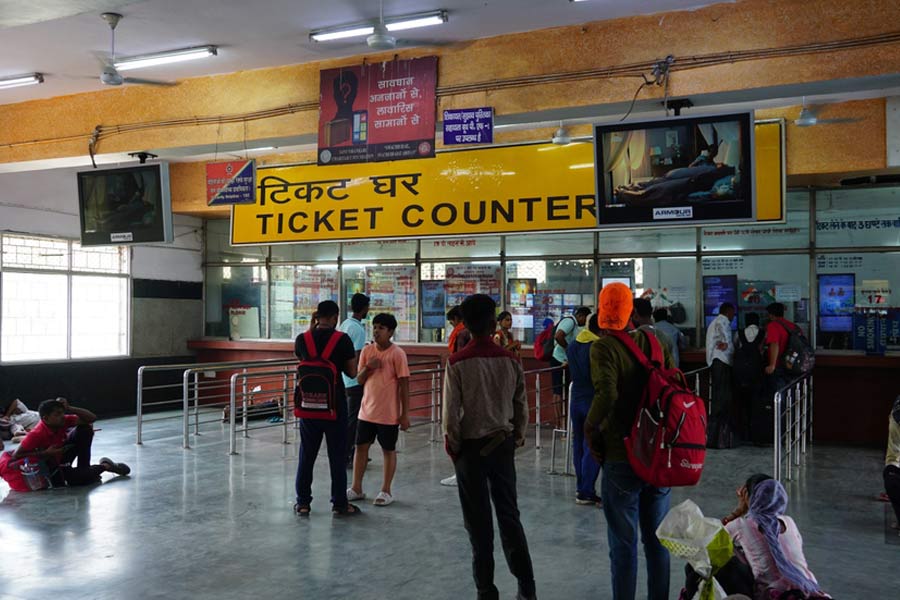 |
A thin black line adorns Leela Samson’s forehead. Her unobtrusive image, reflected in the bindi, matches her style of functioning — straight and unassuming. The dancer and new chief of the censor board may look more like a waif than a grande dame, but don’t get fooled by that. Behind this mild Anna Hazarian air is a lady of steely resolve.
“What is the fuss about my taking over the censor board,” she asks. “It is not as if I am going to view every film. I am just there to influence policy and give direction so that fewer people have problems getting certification. There is a capable CEO managing the day-to-day affairs. I can sort out any issue sitting here by talking to a producer on the phone or via email,” she carries on. The films that will come to her, she adds, will just be the controversial ones.
The reference is to remarks made by her detractors, who hold that Samson will not have the time for the job, and is not the right choice in any case. Her predecessor, actress Sharmila Tagore, has been credited with making the Central Board of Film Certification (CBFC) more liberal, interactive and dynamic. Some have wondered if Leela Samson, with a background in classical arts, will be able to carry on the tradition of glasnost.
Seated behind her desk in her airy office inside the sprawling green covered campus of Chennai’s Kalakshetra arts academy, which she heads, Samson has no time for those who confuse the classical arts with prudishness.
“I am not prudish or conservative. It is absolutely misplaced that Sharmila Tagore is broad-minded, and that if Leela Samson comes in the board will become conservative,” the dancer, dressed in a plain mauve cotton sari with an orange blouse, says forcefully.
Dancers, she points out angrily, have been dealing with explicit sex in ancient texts from their childhood. “The world of classical literature is immersed in every kind of act of sexual or violent disposition. It is just garbed in intricate language. As a dancer I can recite verses from texts — padams, javalis or ashtapadis — that can make a cine actor blush,” says Samson, 60, who has essayed the roles of Shakuntala and Radha in dance productions in her time.
Obviously, the questions raised in a few quarters about her background continue to rankle. “People in classical arts are open-minded about what is shown in films. There should be no worry on that score. As artistes we deal with anatomy and sexuality every day in our temple sculptures,” she says shortly.
Samson had hardly joined her new office when questions were raised about her donning too many roles all at the same time. Six years ago, when the then Delhi-based Bharatanatyam exponent, choreographer and teacher was asked to head Kalakshetra, there were similar murmurs of dissent.
But fighting off petty politics, unions, religious prejudices and influential lobbies eyeing the 100-acre property, the dancer-turned-administrator managed to put the institution — which had fallen into bad times after the death of its iconic founder, Rukmini Devi — back on its feet.
In recognition of her efforts, the government also made her the chairperson of the prestigious Sahitya Natak Akademi last year, once again raising eyebrows and questions on how she would manage two such significant arts institutions. Her detractors now have more to chew on — the Padma Shree winner took over as the chairman of the high-profile CBFC on April 13.
But the dancer admits she was “taken aback” when she was offered the job, especially since her “hands were rather full.” But Samson knows her role. “It is overt vulgarity without making a classical statement which will be looked into,” she clarifies.
But, as director Santosh Sivan and actor Anupam Kher point out, if television is allowed to show every kind of violence and humiliation through reality shows and news, why should the same yardstick not apply to cinema?
“I agree,” she replies. “The irony is that television is free for all. So what certification or censorship are we talking about? We need an internal switch and if we do not like something we must know to switch off.”
The board, she explains, is more a certification authority than a censor board. The film fraternity, she adds, needs to be self-regulative. “There is a case for harmful cinema and that is why the board has been set up,” she says.
Question her about the kind of films she likes, and the CBFC chairman is quick to retort that her “personal likes or dislikes” are not important. “I have to respect all kinds of films,” she says, though she adds she liked Black Swan, a 2011 Oscar-winning film about a ballet dancer. “It was a film that was very much part of our dancers’ world. Our world is like the way it is portrayed in the film,” she says.
After all, her own life has always revolved around dance. When she was nine, her parents — her Catholic mother and Jewish father, who retired as a vice-admiral in the navy — put her in a boarding school set up by theosophists at Kalakshetra. She had just lost her twin sister in a tragic fire accident and her parents felt she would fit into the free-wheeling, gentle education imparted under banyan trees of the theosophists rather than in a convent school.
The quiet artistic girl fitted like a glove in that cultural and intellectually alive atmosphere and fell in love with dance, a passion she pursued all her life.
A single woman, Leela says she did not marry because she never met a man with similar interests. She lives with her surviving parent, her mother, on the Kalakshetra campus.
As a young girl, she might have left Kalakshetra intermittently to complete her BA in English and history from colleges in Mumbai and New Delhi. Yet she kept returning to her alma mater, drawn by her admiration for her charismatic guru, athai (aunt) Rukmini, or to complete her postgraduation in dance and to travel with the repertory. It was prestigious to bag leading roles in Kalakshetra productions and come under the eagle eye and tutelage of Rukmini Devi.
She captured the romance of the era in her biography on Rukmini Devi, based on the rich letters and literature she found in the Kalakshetra archives. However, Samson, who believes in the philosophy of live and let live has no illusion about contemporary times.
“We cannot blame everything on Western influences. Indians also have a penchant for indecent speech and indecent body language and we are extremely prejudiced. At the same time, we are also attracted to the sublime, and even the philosophical in art. There is a bit of both in all of us, don’t you think,” she asks.
Indecent speech kicked up a controversy recently when Sharmila Tagore spoke out against the title of Sudhir Mishra’s latest film, Yeh Saali Zindagi. Cinema, in recent years, has also been showcasing what’s known as item numbers — essentially catchy songs with gyrating women in skimpy clothes. What is Samson’s position on this?
“One of the main issues on which films have to smarten up is how women are portrayed in Indian cinema,” she admits. “Women themselves need to stop thinking that it is all about their body, and how they can sell their body. We need to stop showing cameras peering down cleavages. It is so clichéd, it is such a bore — we all know the woman’s body.”
Her idea of sexy differs greatly from Bollywood’s. “What is sexy is a fully clothed woman whom you want to look at for her beauty. Sometimes, the artistic statement in our films is missing,” she sighs.
However much she might deny it, juggling three jobs might mean more work for her. But Samson claims that she is ready to cope with the challenge. “It is a learning curve each time. We all know the huge significance of cinema in India and love it. I am not about to police anyone.”
Samson will also play a role in conducting a national seminar shortly to discuss the amendments of the outdated CBFC Act. There will be new categories for films that youth above 12 or above 15 can watch, she reveals.
There is work to be done at Kalakshetra too. The administration headed by her is busy drawing up the year’s dance festival schedules, refurbishing the Kootambalam (the traditional theatre built by Rukmini Devi) and completing projects like bringing out DVDs on Rukmini’s Ramayan.
“My work at Kalakshetra is most difficult and time consuming because it is the only executive job I hold,” she explains.
The Sahitya Natak Akademi, which is currently involved in the preparations for Rabindranath Tagore’s 150th birth anniversary celebrations and a major festival of puppets in Guwahati, is being managed by the newly appointed art writer and vice-chairman Shanta Serbjeet Singh, she says. “The CBFC also has a competent CEO and the ministry is behind us. We all support good cinema. So what is there to do but get on with the job,” she asks rhetorically.
Famous last words — or just Samson at work?










